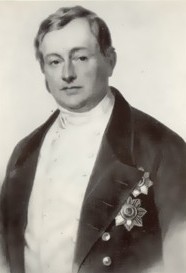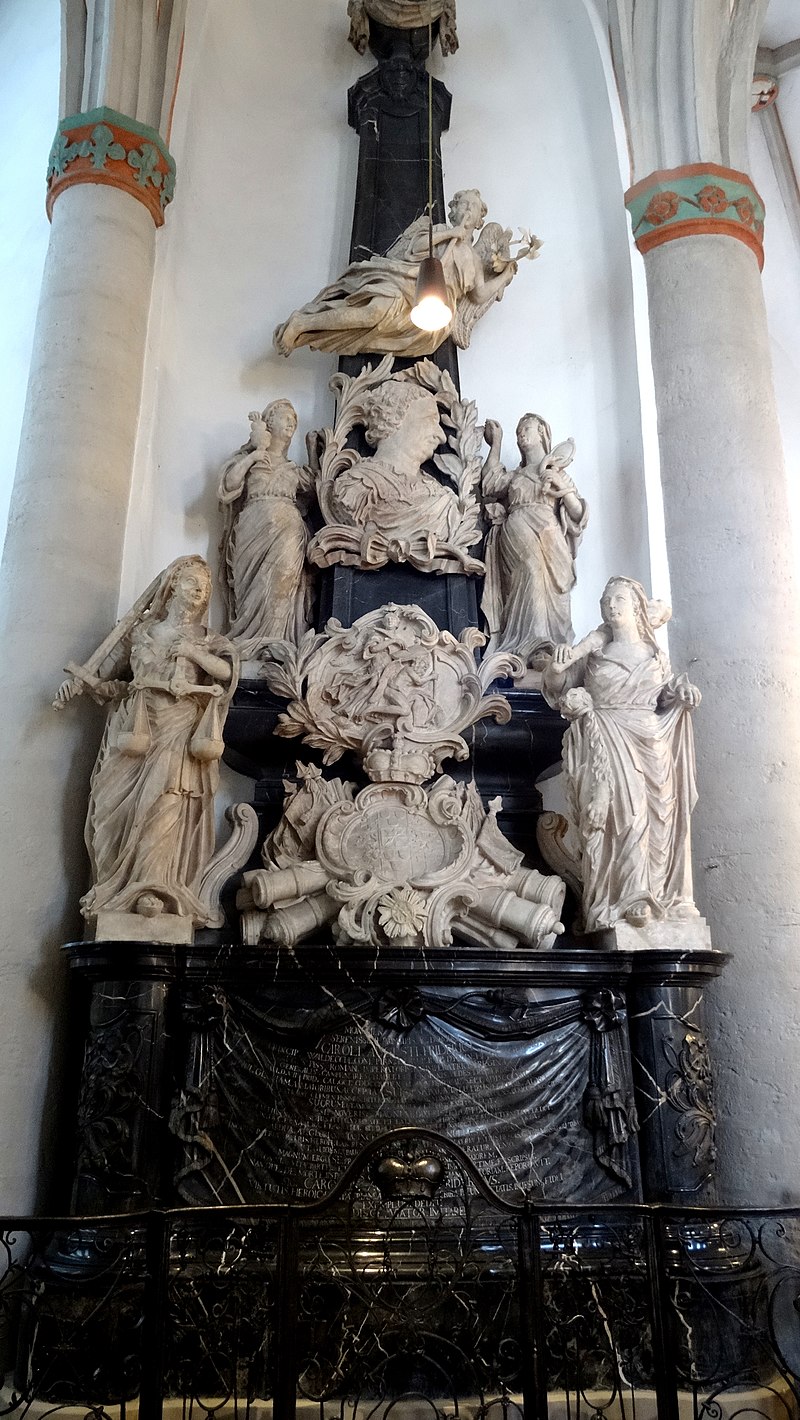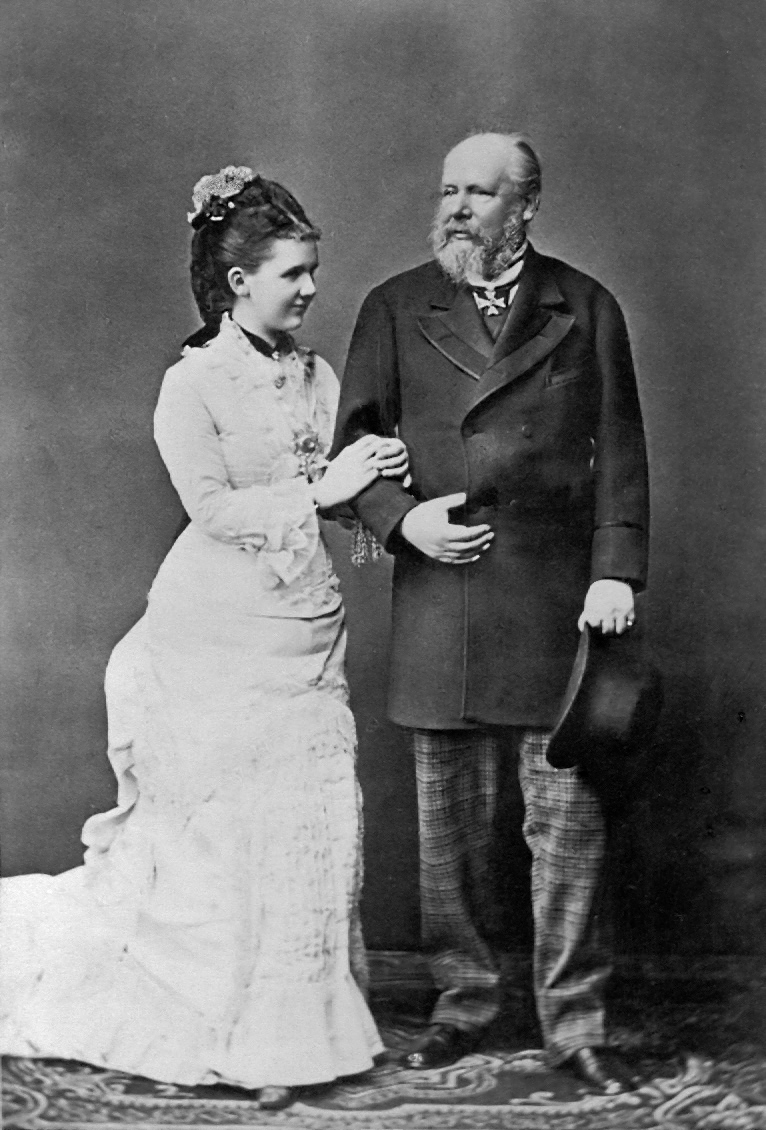by Susan Flantzer © Unofficial Royalty 2021

Emma of Anhalt-Bernburg-Schaumburg-Hoym; Credit – Wikipedia
The County of Waldeck was a county within the Holy Roman Empire since 1180. In 1625, the much smaller County of Pyrmont became part of the much larger County of Waldeck through inheritance and the combined territory was known as the County of Waldeck-Pyrmont. In 1712, Friedrich Anton Ulrich, Count of Waldeck-Pyrmont was elevated to Prince of Waldeck-Pyrmont by Holy Emperor Karl VI.
Friedrich, the last Prince of Waldeck-Pyrmont, abdicated on November 13, 1918, and negotiated an agreement with the government that gave him and his descendants the ownership of the family home Arolsen Castle and Arolsen Forest. Today the territory that encompassed the Principality of Waldeck-Pyrmont is located in the German states of Hesse and Lower Saxony
********************
Princess Emma of Anhalt-Bernburg-Schaumburg-Hoym was the wife of Georg II, Prince of Waldeck-Pyrmont. She was born at Schaumberg Castle in Schaumburg, Principality of Anhalt-Bernburg-Schaumburg-Hoym, now in the German state of Lower Saxony, on May 20, 1802. Emma was the third of the four children, all daughters, of Viktor II, Prince of Anhalt-Bernburg-Schaumburg-Hoym (1767 – 1812) and Amelia of Nassau-Weilburg (1776 – 1841).
Through their mother, Emma and her sisters were descendants of King George II of Great Britain and Willem IV, Prince of Orange. Emma had two older sisters and one younger sister. All three of her sisters died in their early twenties.
- Hermine (1797 – 1817), married Archduke Joseph of Austria, Palatine of Hungary, had fraternal twins, died giving birth to them
- Adelheid (1800 – 1820), married the future August I, Grand Duke of Oldenburg, had two daughters including Amalia who married Otto of Bavaria, the elected King of Greece
- Ida (1804 – 1828), married the future August I, Grand Duke of Oldenburg, widower of her sister, had one son Peter II, Grand Duke of Oldenburg

Hoym Castle where Emma grew up; Credit – Von F.baumgarten – Eigenes Werk, CC BY-SA 3.0, https://commons.wikimedia.org/w/index.php?curid=19217416
Emma’s father Viktor II, Prince of Anhalt-Bernburg-Schaumburg-Hoym died in 1812, after a reign of six years, while his daughters were still children. As he had no sons, Viktor was succeeded by his half-uncle Friedrich, Prince of Anhalt-Bernburg-Schaumburg-Hoym. Throughout Viktor’s reign, his half-uncle claimed that he had a right to co-reign because the laws of primogeniture were never formally installed in Anhalt-Bernburg-Schaumburg-Hoym. Emma and her sisters grew up at Hoym Castle (link in German), in Hoym, now in the German state of Saxony-Anhalt. After her father’s death, Emma’s mother Amelia of Nassau-Weilburg married Baron Friedrich von Stein-Liebenstein-Barchfeld in 1813.

Georg II, Prince of Waldeck-Pyrmont; Credit – Wikipedia
On June 26, 1823, at Schaumburg Castle in Schaumburg, Principality of Anhalt-Bernburg-Schaumburg-Hoym, now in the German state of Lower Saxony, Emma married Georg II, Prince of Waldeck-Pyrmont. Emma and Georg had had five children. Through their son Georg Viktor, they are ancestors of the Dutch royal family.
- Augusta of Waldeck-Pyrmont (1824 – 1893), married Alfred, Prince of Stolberg-Stolberg, had seven children
- Josef of Waldeck-Pyrmont (1825 – 1829), died in childhood
- Hermine of Waldeck-Pyrmont (1827 – 1910), married Adolf I, Prince of Schaumburg-Lippe, had eight children
- Georg Viktor, Prince of Waldeck-Pyrmont (1831 – 1893), married (1) Helena of Nassau, had seven children including Emma who married King Willem III of the Netherlands and Helena who married Prince Leopold, Queen Victoria’s hemophiliac, youngest son (2) Louise of Schleswig-Holstein-Sonderburg-Glücksburg, had one son who was killed in World War I
- Wolrad of Waldeck-Pyrmont (1833 – 1867)
On May 15, 1845, Georg II died at the age of 55 and Emma served as Regent of the Principality of Waldeck-Pyrmont until her son Georg Viktor, Prince of Waldeck-Pyrmont reached his majority in 1852. One of Emma’s first acts was to reform the Waldeck-Pyrmont forces of the German Federal Army, which collectively defended the German Confederation from external enemies. This was implemented in 1845 by Prussian army officers. The Revolutions of 1848 took place during Emma’s regency and this led to a new parliament being convened. Emma’s regency was viewed as important because of the complete overhaul of the organization of the government.
From 1853 until her death, Emma lived at the Neues Schloss (New Castle – link in German), which was originally built for Christiane Henriette of Zweibrücken-Birkenfeld, Princess of Waldeck-Pyrmont, her husband’s grandmother, as her widow’s seat, near the main Waldeck-Pyrmont main residence, the Residenzschloss Arolsen (link in German), in Arolsen, Principality of Waldeck-Pyrmont, now in the German state of Hesse. Emma had the Neues Schloss redesigned in the classic style.

Princely Mausoleum and Cemetery; Credit – www.findagrave.com
Emma survived her husband by thirteen years, dying on August 1, 1858, in Pyrmont, Principality of Waldeck-Pyrmont, now in the German state of Lower Saxony, aged 56. She was buried with her husband in the Princely Mausoleum at Schloss Rhoden (link in German) in Rhoden, Principality of Waldeck-Pyrmont, now in the German state of Hesse. Emma was the grandmother of Princess Emma of Waldeck-Pyrmont who became Queen of the Netherlands when she married King Willem III of the Netherlands. Emma of Waldeck-Pyrmont was born the day after her grandmother died and was named in her honor.
This article is the intellectual property of Unofficial Royalty and is NOT TO BE COPIED, EDITED, OR POSTED IN ANY FORM ON ANOTHER WEBSITE under any circumstances. It is permissible to use a link that directs to Unofficial Royalty.
Waldeck-Pyrmont Resources at Unofficial Royalty
- Principality of Waldeck-Pyrmont Index
- Profiles: Princes and Consorts of Waldeck and Pyrmont
- Waldeck and Pyrmont Royal Burial Sites
Works Cited
- De.wikipedia.org. 2020. Emma Von Anhalt-Bernburg-Schaumburg-Hoym. [online] Available at: <https://de.wikipedia.org/wiki/Emma_von_Anhalt-Bernburg-Schaumburg-Hoym> [Accessed 4 December 2020].
- De.wikipedia.org. 2020. Georg II. (Waldeck-Pyrmont). [online] Available at: <https://de.wikipedia.org/wiki/Georg_II._(Waldeck-Pyrmont)> [Accessed 3 December 2020].
- En.wikipedia.org. 2020. George II, Prince Of Waldeck And Pyrmont. [online] Available at: <https://en.wikipedia.org/wiki/George_II,_Prince_of_Waldeck_and_Pyrmont> [Accessed 3 December 2020].
- En.wikipedia.org. 2020. Princess Emma Of Anhalt-Bernburg-Schaumburg-Hoym. [online] Available at: <https://en.wikipedia.org/wiki/Princess_Emma_of_Anhalt-Bernburg-Schaumburg-Hoym> [Accessed 4 December 2020].
- En.wikipedia.org. 2020. Victor II, Prince Of Anhalt-Bernburg-Schaumburg-Hoym. [online] Available at: <https://en.wikipedia.org/wiki/Victor_II,_Prince_of_Anhalt-Bernburg-Schaumburg-Hoym> [Accessed 5 December 2020].
- Flantzer, Susan, 2020. Georg II, Prince of Waldeck-Pyrmont. [online] Unofficial Royalty. Available at: <https://www.unofficialroyalty.com/georg-ii-prince-of-waldeck-and-pyrmont/> [Accessed 3 December 2020].
- Flantzer, Susan, 2020. Royal Burial Sites Of The Principality Of Waldeck-Pyrmont. [online] Unofficial Royalty. Available at: <https://www.unofficialroyalty.com/former-monarchies/german-royals/principality-of-waldeck-and-pyrmont/royal-burial-sites-of-the-principality-of-waldeck-pyrmont/> [Accessed 30 November 2020].



























